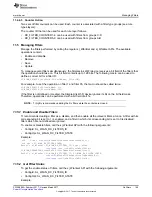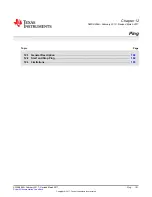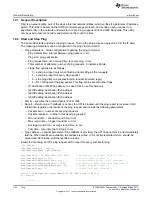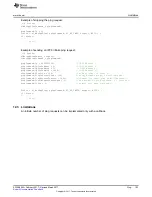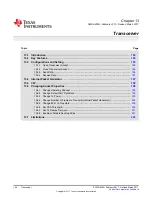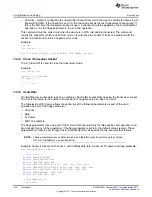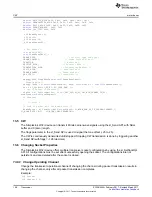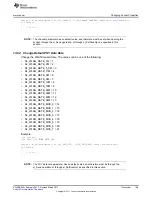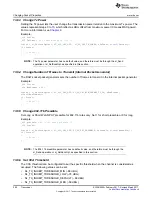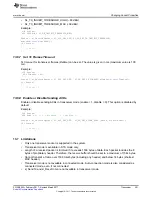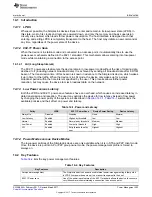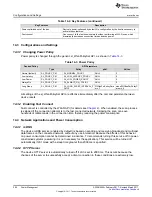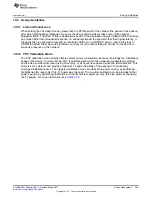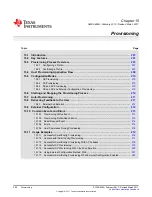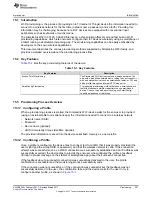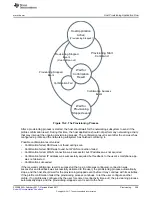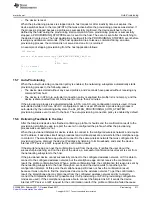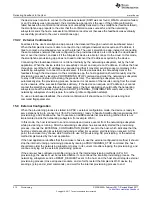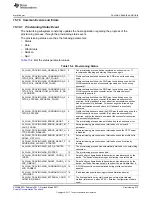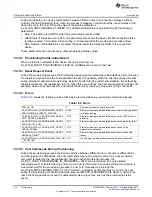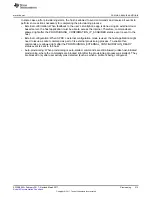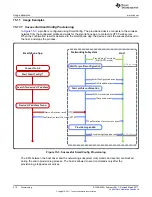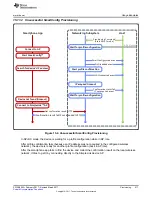
Introduction
203
SWRU455A – February 2017 – Revised March 2017
Copyright © 2017, Texas Instruments Incorporated
Power Managment
14.1 Introduction
14.1.1 LPDS
Whenever possible, the SimpleLink device strives to enter and remain in its low-power state (LPDS). In
this state, most of its clocks and logic are powered down, and only the memory and basic supervision
circuitry are enabled, which leads to low power consumption. The host interface is designed such that
entering and exiting LPDS is completely transparent to the host. The host may initiate a new command at
any time, regardless of the power state of the device.
14.1.2 802.11 Power Save
When the device is in station mode and connected to an access point, it automatically tries to use the
power-save mechanism defined in the 802.11 standard. This mechanism allows entering into low-power
mode while maintaining a connection to the access point.
14.1.2.1 LSI (Long Sleep Interval)
The 802.11 power-save feature lets the device remain in low-power mode without the risk of missing data
destined to it (including network broadcast data). It is achieved by sending all broadcast data after a DTIM
beacon. The transmission time of this beacon is known in advance to the SimpleLink device, which wakes
it up in time for the traffic. When the device is in LSI mode, the device only wakes up for a single
broadcast period within the time interval specified by the user. This process allows further power
reduction, but may cause the device to miss broadcast data on the network.
14.1.3 Low Power versus Latency
Both the LPDS and 802.11 power-save features have an overhead, which causes an increased latency in
data transmission and reception. The user may optimize the device for low latency instead of low power
by changing the power policy of the system, as described in
summarizes the
available policies and their effect on power and latency.
Table 14-1. Power and Latency
Policy
LPDS
802.11 Power Save
Device Power Saving
Device Latency
Always On
Disabled
Disabled
None
Minimal
Low Latency
Enabled
High entry threshold
Low
Low
Normal
Enabled
Normal entry threshold
Medium
Medium
Low Power
Enabled
Low entry threshold
High
High
LSI
Enabled
Entry threshold set by
user
Highest
Highest
14.1.4 Power Modes versus Device Modes
The low-power policies of the SimpleLink device are only available when it is in STA and P2P client mode.
Once the device is put into AP or P2P group owner mode, the power-management profile is forced to
always on.
14.2 Key Features
lists the key power management features.
Table 14-2. Key Features
Key Features
Description
Auto-power management
The SimpleLink device has advanced internal power-management logic that puts it
in LPDS (low-power deep sleep) in a manner transparent to the host.
802.11 Power save
Use of the power-save feature of the 802.11 standard allows the device to consume
very little power while maintaining a connection to an access point.

